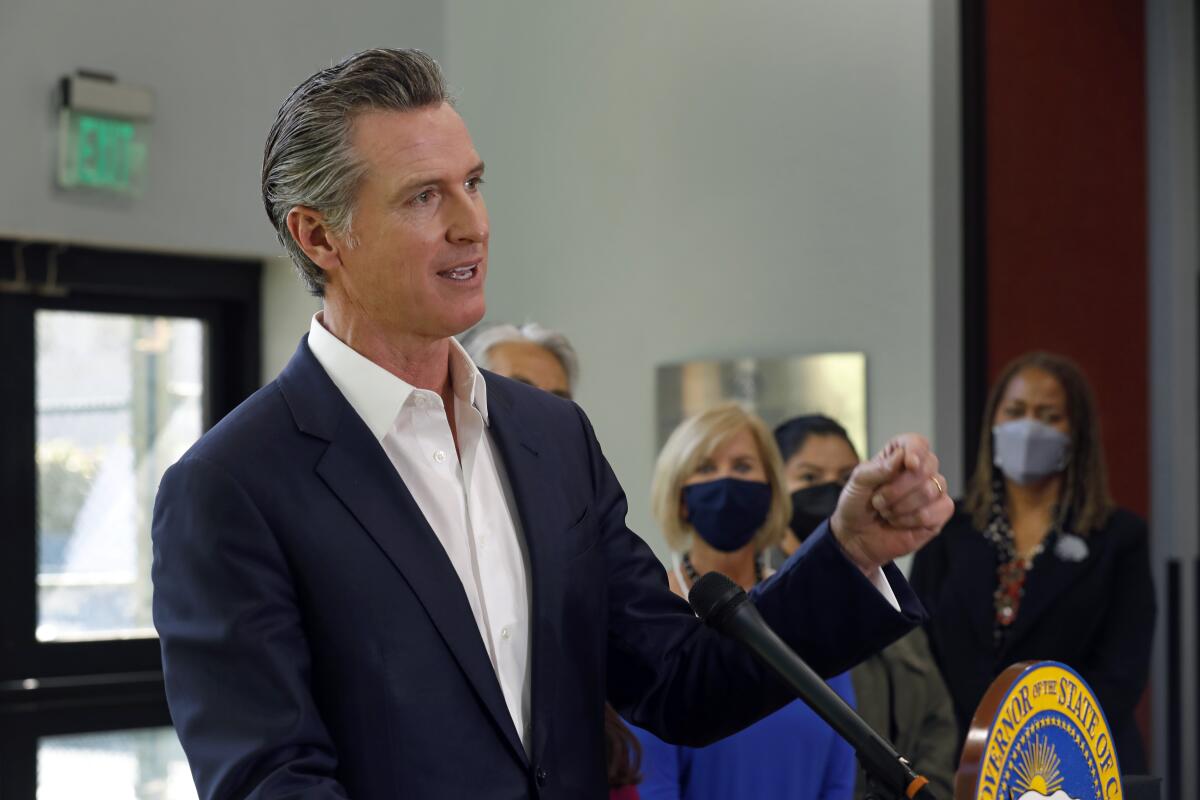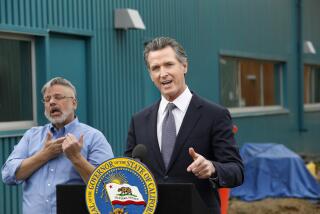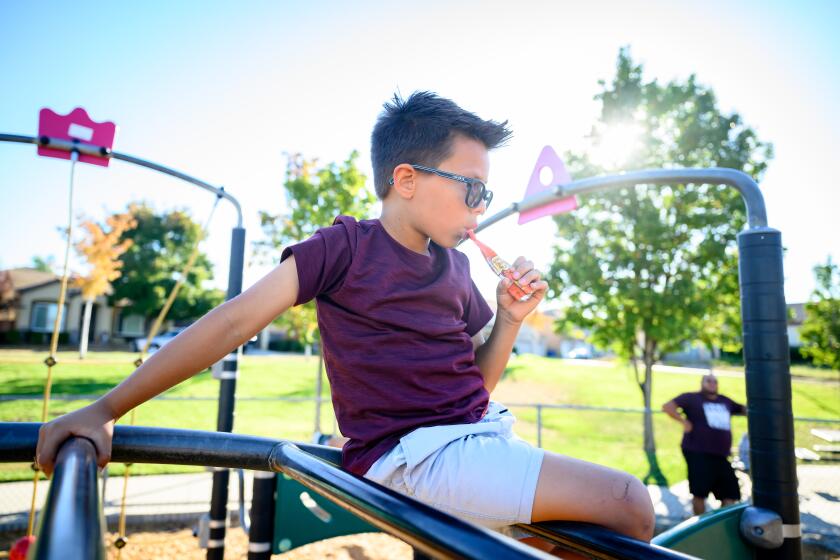California’s recall election officially ends as Newsom prepares for 2022

SACRAMENTO — Election results showing California voters refused to oust Gov. Gavin Newsom were certified by state officials Friday, bringing to an end a historic and bitter recall effort while possibly boosting the Democratic governor’s chances next year at winning a second four-year term.
With all the votes tallied, the recall failed by a substantial margin: 61.9% of the votes were to keep Newsom in office through the end of 2022 while only 38.1% of voters cast ballots to remove him.
The final election returns released by Secretary of State Shirley Weber show an outcome for Newsom that was largely unchanged from 2018, when he won the most lopsided California governor’s race since 1950. Recall supporters failed to capitalize on the dissatisfaction of some voters with Newsom’s handling of the COVID-19 crisis, having successfully used the pandemic as a catalyst for their longshot bid at getting a recall on the statewide ballot.
Although the percentages were the same in the final results as in 2018, the political climate was starkly different for the Sept. 14 recall election. It was also different from California’s only other gubernatorial recall, in 2003, when voters removed then-Gov. Gray Davis, a Democrat, and replaced him with Republican Arnold Schwarzenegger. In that election, polls showed Davis to be deeply unpopular and voters convinced he should be removed from office.
This year’s polls were never as bad for Newsom, though some early surveys sounded a warning to his supporters.
A UC Berkeley Institute of Governmental Studies poll co-sponsored by The Times and released in late July found that likely voters’ opinions were almost evenly split, driven mostly by the indifference many Democrats expressed about the recall. Momentum then turned strongly against recall after a deluge of political ads and support from leading Democrats, who slammed the effort as a Republican power grab orchestrated by far-right supporters of former President Trump and anti-COVID-19 vaccine activists.
Newsom’s campaign to defeat the recall was aided by a string of prominent Democrats descending on California in the weeks before election day, including President Biden and Vice President Kamala Harris, as well as television ads by Sens. Bernie Sanders of Vermont and Elizabeth Warren of Massachusetts.
Conservative talk show host Larry Elder, who led the field of candidates hoping to become California’s next governor, emerged as the perfect foil for Newsom. Among the field of 46 men and women running to replace Newsom, Elder came out on top with more than 3.5 million votes. His tally bested that of established GOP candidates such as former San Diego Mayor Kevin Faulconer and pop culture celebrities including reality TV star Caitlyn Jenner.
Elder provided red meat positions to GOP voters, opposing abortion rights and supporting offshore oil drilling while capitalizing on his support for Trump — stances abhorrent to most Democratic voters in a state where Democrats outnumber Republicans by almost 2 to 1.
In the month leading up to the recall election, a time when the COVID-19 Delta variant was raging and polls showed most Californians supported the governor’s actions to stem the spread of the coronavirus, Elder promised to repeal the Newsom administration’s mandates requiring students to wear masks in public schools and teachers, state employees and healthcare workers to be vaccinated.
The only Democrat among the replacement candidates to break through was Kevin Paffrath, a social media personality who has more than 1.6 million followers for his personal finance videos on YouTube. The final results show he won only about 706,000 votes.
But the most popular choice was to reject the replacement candidates. Almost 5.5 million voters left their ballots blank on the question of who should take Newsom’s place if the recall passed. Democrats urged voters to simply vote no on whether to recall Newsom and ignore what they characterized as a circus-like campaign among the replacement candidates.
Orrin Heatlie, a retired Yolo County sheriff’s sergeant who was the official proponent of the effort to recall Newsom, blamed the election loss on a combination of factors. Elder, he said, did some “really stupid things” during his campaign that allowed Newsom to cast him as a right-wing extremist.
Heatlie also said voter apathy, driven in part by Trump and others attacking the nation’s elections systems as rigged and brimming with fraud, also undercut the recall effort.
“I think a lot of those people just tossed their hands up and said, ‘You know, it’s not worth my time,’” Heatlie said. “Voting is an American right and it’s a patriotic duty.”
Despite easily beating the recall attempt, Newsom recently talked about how difficult the whole ordeal was for him and his family, especially when it coincided with the burdens of the pandemic that all California families were facing.
“It’s hard. I mean, it’s hard to wake up to bullhorns. It’s hard to have the ubiquity and the surround sound of protesters,” Newsom said at the Milken Institute’s 24th Global Conference in Los Angeles on Wednesday.
Newsom said it was disturbing for his three children, all 12 years old or under, to see “billboards everywhere with your face as Hitler” and be told by friends at school that their dads hated the governor.
Even so, the governor acknowledged during the event that his own “personal stupidity” helped provide the political fuel to ignite the recall effort — a comment likely referring to his decision to attend a lobbyist’s birthday party at the upscale French Laundry restaurant in the Napa Valley last November, at times unmasked in photos that later surfaced after he had pleaded with Californians to avoid similar gatherings.
“No one’s beating themselves up more than I did for that. Dumb, dumb, dumb,” Newsom said on Wednesday. “But it’s become something so much more, and that’s the nature of our politics. We don’t like to dislike, we love to hate.”
The governor’s most impressive feat in beating the recall may have been in maximizing support among his political base. Compared to the 2018 gubernatorial election, Newsom increased his margin of support in several large Bay Area counties. He also made smaller but noticeable gains in Orange and San Diego counties, partly reflecting the Republican Party’s continued weakening in those areas.
Final results show 58.4% of California voters cast ballots in the recall election, down slightly from the 2018 race but still the third-highest percentage in a nonpresidential statewide election since 1994. That participation level may be due, in part, to the decision by Newsom and legislative Democrats to mail a ballot to each of California’s 22 million registered and active voters — a repeat of the state’s extraordinary effort in 2020 and prompted by concerns over possible COVID-19 exposure at in-person voting locations.
Other changes made to the recall process were more controversial. None were more intensely debated than selecting a date for the special statewide election, a process that the California Constitution left to Lt. Gov. Eleni Kounalakis. But the range of options she had was influenced by a state budget-related bill Democrats adopted and Newsom signed, one that sped up the analysis of the recall election’s cost by up to one month — and giving Newsom supporters a chance to get ballots in the hands of voters by late August.
If anything, Newsom’s success in the recall may have made his potential rivals in the 2022 governor’s race think twice about running. A UC Berkeley/Times poll last month found the governor would, at that point, beat any of the well-known Republicans who ran in the special election. Newsom also enters the race with a sizable campaign war chest and no known opposition from inside the ranks of the Democratic Party.
More to Read
Sign up for Essential California
The most important California stories and recommendations in your inbox every morning.
You may occasionally receive promotional content from the Los Angeles Times.












